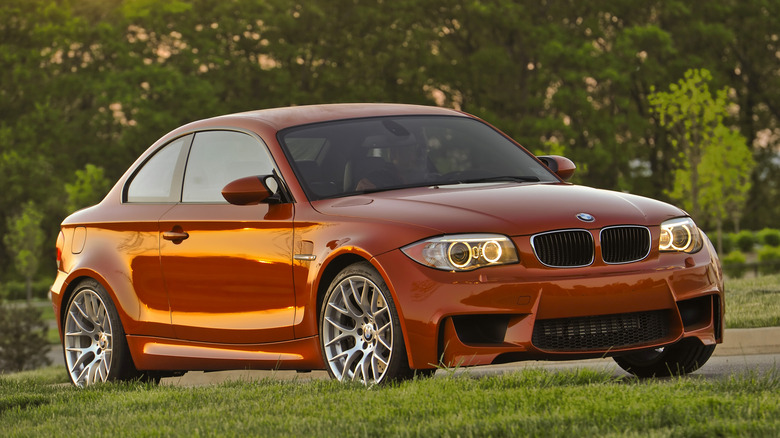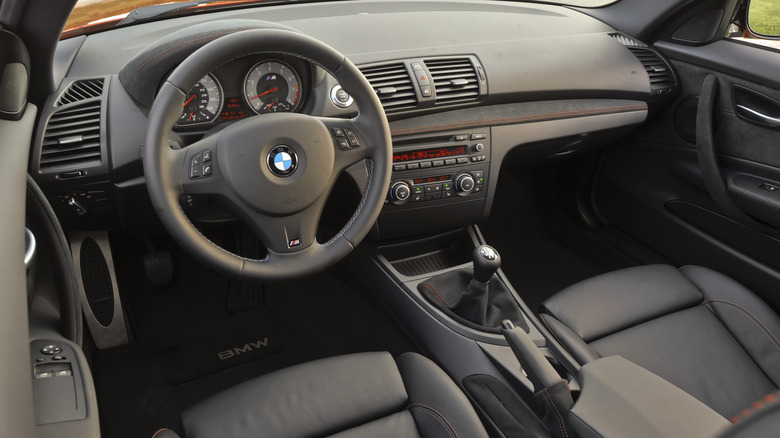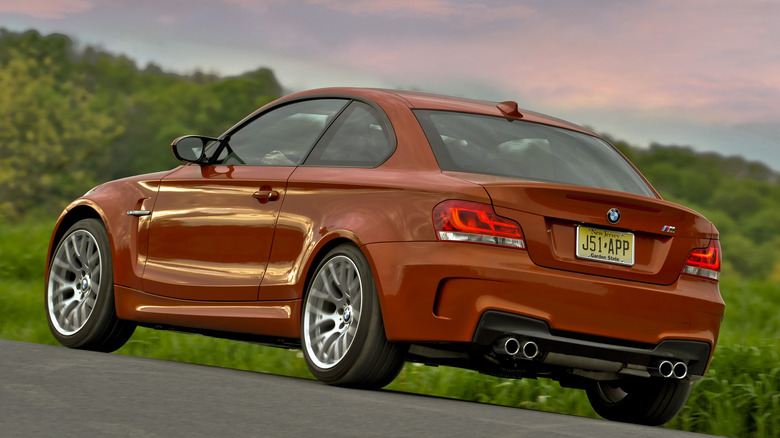Why The BMW 1 M Coupe Was Discontinued After Just One Year
The BMW 1 Series, while it was available in the United States, provided small, practical, entry-level luxury transportation. It slotted in BMW's lineup under models like the 3 series, and before it was discontinued in 2014 (at least in the U.S.), it was relatively likable, if not particularly memorable. That is until the limited-production 1 Series M Coupe debuted. Adding the storied M badge to the small coupe back in 2011 was a signal to the automotive world that this hopped-up coupe meant business. More than just an upscale daily driver, the 1 Series M (or the 1M – not to be mixed up with the M1 racecar) was committed to driving thrills.
Many have called the 1M a "parts bin" car, referring to the fact that many of its components were shared with different BMW models at the time. It turns out, however, that BMW pieced together just the right set of parts from the bin, making a fast and fun two-door with lots to like. But, it was only around for one year – 2011. Even with that short run, some have gone as far as calling it one of the best M cars of all time, with some even referring to it as BMW's "most beloved car of the 21st century." So why would BMW take it off the market if it were so well-received?
What made the 1M Coupe special?
First, let's talk about what made the 1M such a hit in its day. The 1M was built to thrill drivers and maximize engagement. Under the hood of the spicy two-door BMW was the excellent N54 engine, paired exclusively with rear-wheel drive and a six-speed manual transmission –- an enthusiast's dream. The inline 6 was hooked up to two turbochargers and fitted with an overboost feature that maximized torque. Standard horsepower was quoted at 335 hp, and torque was a stout 332 lb-ft. Engage the electronically-controlled overboost function, though, and torque goes up to 369 lb-ft. That's quite a bit of thrust for a car that weighed just 3,362 pounds.
According to BMW, the 1M had enough power to take it from zero to 60 mph in just 4.7 seconds –- quick enough to keep up with many sporty coupes that are on the market today. When Car and Driver tested one back in 2011, however, they made the sprint in a quicker-than-quoted 4.5 seconds. Other high-performance bits fitted to the 1M included a limited-slip differential, dampers and brakes from the M3 of the day, as well as alloy wheels sourced directly from the M3 Competition Package. The 2006 M5 lent the 1M its steering wheel-mounted M button, too, which activated sharper responses from the 1M's throttle. Even if they were from the "parts bin," the 1M got some pretty cool parts.
Why did BMW stop making the 1M Coupe?
At its launch, the 1 Series M was It was originally slated for just 2,700 units of production, but demand was so high that BMW ended up producing just over 6,300 of them –- lucky us. Most of the 1M's were sold in 2011, with some being sold in 2012, but they were all officially referred to as 2011 models. In the United states, only 740 were sold –- a very low number when you consider the 1M's popularity.
But in the end, the 1M was never meant for continued production. It was a one-and-done vehicle from the start, with even BMW's initial press release referring to it as "available in limited quantities and with a limited range of options." It seems that no matter how popular the 1M became, it was never going to stick around for long.
Even with the pumped-up worldwide production numbers, the 1M is still relatively rare. And, it still holds significant value today, with low-mileage examples selling on auction sites for as much as $71,000 as recently as 2024. Not bad when you compare it to the original starting price of $47,885 (including destination). Cars with such high levels of driving engagement, it would seem, are always a hot commodity.


